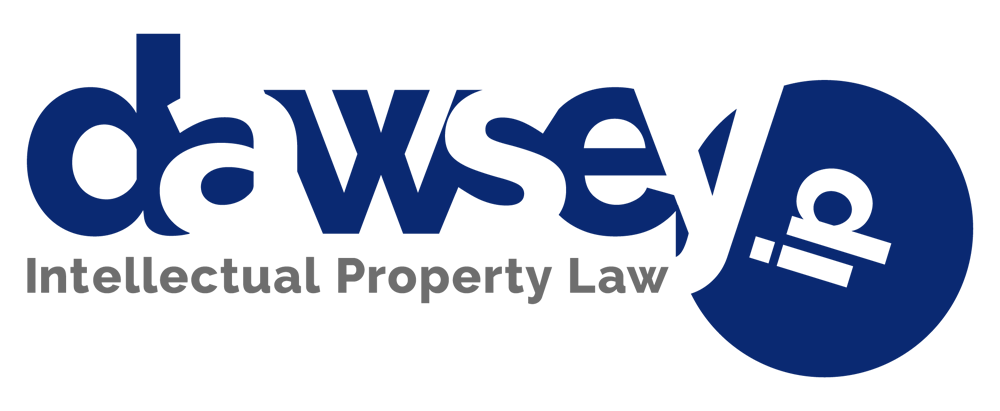
Business Method Patent Fundamentals
© 2002, Dawsey Co., LPA
May 2002
The Turning Point
A major change in the patent environment has occurred in the past 4 years. One court case, State Street Bank & Trust Co. v. Signature Financial Group, Inc., effectively created a category of patents that many had previously believed to be unpatentable. This category is generically referred to as “business method” patents (BMP’s).
The State Street Bank decision held that inventions relating to methods of doing business should not be rejected by the United States Patent Office, nor struck down by the courts, as non-statutorily defined subject matter. The decision had an immediate impact on the United States Patent Office, and patent practice in general. The number of patent applications filed within this field has grown from approximately 1,300 applications in 1998 to an anticipated 10,000 applications in 2001. That is an impressive 670% growth in four years.
BMP Requirements
An invention must be useful, novel, non-obvious, and fall within a statutorily defined category of subject matter to be patentable. United States Code Title 35 defines statutory subject matter as encompassing “any new and useful process, machine, manufacture, or composition of matter, or any new and useful improvement thereof.” Prior to the State Street Bank decision most practitioners believed that methods of doing business did not fall within a statutorily defined category of subject matter.
While it is now accepted that business methods fall within a statutorily defined category of subject matter they are closely scrutinized for usefulness, novelty, and non-obviousness. The usefulness requirement is generally easily met by business method inventions. Most inventions do not become applications unless they have some degree of usefulness. To meet the novelty requirement an invention must be new as compared to the prior art. While more challenging than the usefulness requirement, most business method applications satisfy the novelty requirement. It is the non-obviousness requirement that is a stumbling block for many BMP applications. Here, the invention must be non-obvious in light of the prior art. This means that the differences between the invention and the prior art would not have been obvious to a person having ordinary skill in the art.
Examples
Today, business method patents claim inventions that are methods of doing business, typically implemented using computers. The explosive growth of the Internet and electronic transactions has redefined methods of doing business in many ways. Two of the most widely know BMP’s include:
– Amazon.com’s “one-click” patent on a method using the single click of a mouse to enter all the information required to complete an online purchase.
– Priceline.com’s “reverse auction” patent covering a method of purchasing airline tickets over the Internet.
Patent Office Obstacles
Whenever there is rapid growth in a relatively new technology area there will be obstacles to overcome in the Patent Office. The greatest problem encountered by the Patent Office in reviewing BMP applications may have been the examiners’ limited knowledge of business methods.
Unlike most new technology areas that are offshoots of mature technology areas, patent examiners have had relatively little business method prior art to draw upon. Prior to the State Street Bank decision there were only a handful of issued patents on business methods and companies that had innovative methods of doing business kept them closely guarded. Therefore, patent examiners have struggled with obtaining prior art reference material, as their traditional printed resources were simply not suited for BMP’s.
The Patent Office has taken several steps to overcome these obstacles. Since the beginning of 2000, the Patent Office has doubled the number of examiners in the workgroup reviewing BMP applications. Additionally, the Office has made it a priority to hire examiners with both technical and business expertise for this workgroup. The Office has also held several business method partnership meetings with representatives from the business and legal community, trade associations, and the Office to identify obstacles and procedures to overcome them. Further, the Office has instituted a mandatory second examination by a different examiner for all allowed BMP applications.
A Sword And A Shield
BMP’s have allowed many traditionally “non-technology” companies, such as those in insurance and financial services, to seek patent protection on their proprietary business practices. As with any patent, there can be many varied motivations for obtaining patent protection.
Of course, patent protection increases the value of a company and may attract investors, but a patent’s ability to block competition is often even more valuable. BMP’s often can serve as a barrier to entry preventing poorly financed small start-up companies from entering a market.
Additionally, a patent portfolio can serve as a shield protecting a company from infringement claims by a third party. A company with an extensive patent portfolio can be a very intimidating opponent in a patent infringement suit, especially when it threatens counterclaim infringement suits. Patent portfolios can offer great leverage in encouraging settlement.
Mining BMP’s In Your Company
The key to maximizing the number of potential BMP’s in an organization is to ensure that everyone involved in creating and implementing business systems is aware of BMP’s and their potential value to the company. For most companies this simply means educating the key group of project managers that oversee the teams developing new systems within the organization.
Additionally, agreements with outside consultants of all kinds now warrant extra attention. Prior to the State Street Bank decision, intellectual property development and ownership clauses in management consulting contracts were an afterthought, when present at all. Now, the companies that hire management consulting firms should closely scrutinize such clauses. It is only fair that a patent resulting from the work of a hired consultant be assigned to the company paying the bill.
Conclusion
Business method patents have opened the doors of the incredibly valuable field of intellectual property protection to many “non-technology” companies. Current trends in the courts and the Patent Office indicate that business method patents are here to stay and will likely continue to grow in number at an amazing rate.
